About Microcline
Microcline – from Greek for little and slanted, in reference to the slight variation of the cleavage angle from 90°.
Feldspar (mineral group name), from Swedish names for field (feldt or falt) and spar (spat), in reference to the spar in tilled fields overlying granite; in German the word became Feldspat.
Feldspar (mineral group name), from Swedish names for field (feldt or falt) and spar (spat), in reference to the spar in tilled fields overlying granite; in German the word became Feldspat.
Microcline hand-specimen
Formula: KAlSi3O8
System: Triclinic
Color: White, grey, greyish yellow, yellowish, tan, salmon-pink, bluish green, green
Lustre: Vitreous
Hardness: 6–6½
Density: 2.54–2.57
System: Triclinic
Color: White, grey, greyish yellow, yellowish, tan, salmon-pink, bluish green, green
Lustre: Vitreous
Hardness: 6–6½
Density: 2.54–2.57
Microcline PPL properties
Relief: Low negative
Habit/Form: It is commonly found as anhedral and euhedral grains in many igneous and metamorphic rocks. Crystals are roughly tabular parallel to (010) and elongate parallel to the c or a axis. Exsolved albite may form lamellae, irregular ribbons, and blebs to form perthite.
Color: Colorless, frequently cloudy due to incipient alteration
Pleochroism: –
Cleavage: Sometimes after 1 or 2 directions; but are difficult to see in thin section due to very low relief; perfect on {001} and good/distinct on {010}, intersecting essentially at right angles; {110} cleavage is poor.
Habit/Form: It is commonly found as anhedral and euhedral grains in many igneous and metamorphic rocks. Crystals are roughly tabular parallel to (010) and elongate parallel to the c or a axis. Exsolved albite may form lamellae, irregular ribbons, and blebs to form perthite.
Color: Colorless, frequently cloudy due to incipient alteration
Pleochroism: –
Cleavage: Sometimes after 1 or 2 directions; but are difficult to see in thin section due to very low relief; perfect on {001} and good/distinct on {010}, intersecting essentially at right angles; {110} cleavage is poor.
Microcline XPL properties
Isotropy/Anisotropy: Anisotropic
Interference color: Order I gray to white; feldspars are very useful in determining the thickness of any slide in which it occurs.
Extinction angle: The extinction angle on (001) = 15-20° and 5° to {001} cleavage traces.
Twins: Tartan twin. Microcline is often characterized by a distinctive plaid (cross-hatched) twinning (also known as tartan twinning), giving a zebra stripe appearance. This type is also called gridiron or quadrille structure, the two sets or lamellae being at right angles. The twin lamellae are usually spindle shaped and the extinction usually wavy.
Tartan/gridlike/quadrille/gridiron twinning pattern is, undoubtedly, the most characteristic feature of microcline. The lamellae may be very fine, and the result is an uneven extinction (moire effect). Highest magnification may be necessary to resolve the twinning. The tartan twinning is a double set of polysynthetic twins according to albite and pericline laws. Grid twinning indicates that the mineral originally crystallized at high temperature, with monoclinic symmetry, and subsequently inverted to the triclinic polymorph.
Uniaxial/Biaxial: Biaxial (-)
Optic axial angle (2V): 2V measured: 66 – 103°, calculated: 80°
Interference color: Order I gray to white; feldspars are very useful in determining the thickness of any slide in which it occurs.
Extinction angle: The extinction angle on (001) = 15-20° and 5° to {001} cleavage traces.
Twins: Tartan twin. Microcline is often characterized by a distinctive plaid (cross-hatched) twinning (also known as tartan twinning), giving a zebra stripe appearance. This type is also called gridiron or quadrille structure, the two sets or lamellae being at right angles. The twin lamellae are usually spindle shaped and the extinction usually wavy.
Tartan/gridlike/quadrille/gridiron twinning pattern is, undoubtedly, the most characteristic feature of microcline. The lamellae may be very fine, and the result is an uneven extinction (moire effect). Highest magnification may be necessary to resolve the twinning. The tartan twinning is a double set of polysynthetic twins according to albite and pericline laws. Grid twinning indicates that the mineral originally crystallized at high temperature, with monoclinic symmetry, and subsequently inverted to the triclinic polymorph.
Uniaxial/Biaxial: Biaxial (-)
Optic axial angle (2V): 2V measured: 66 – 103°, calculated: 80°
Microcline distinguishing features under the microscope
Get Geology Toolkit Premium for more features of Microcline thin section under the microscope.
References
- Deer, W. A., Howie, R. A., & Zussman, J. (2013). An introduction to the rock-forming minerals (pp. 498). Mineralogical Society of Great Britain and Ireland, London.
- mindat.org – The Mineral Database

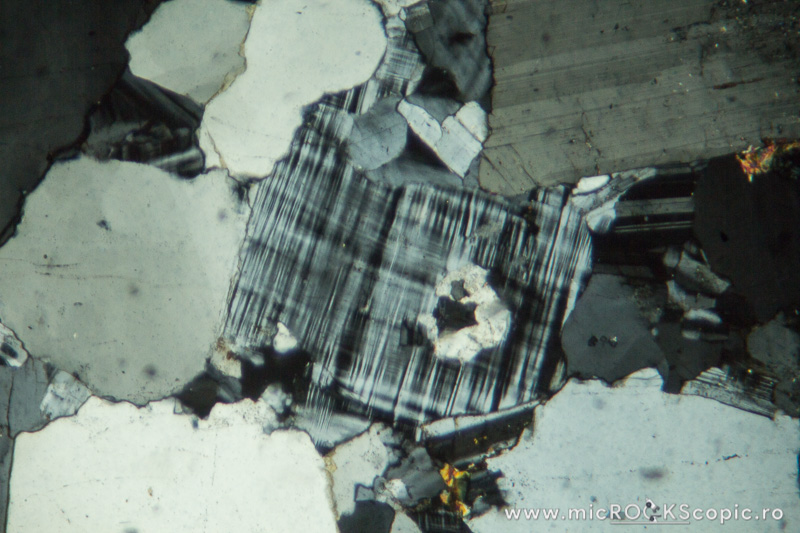
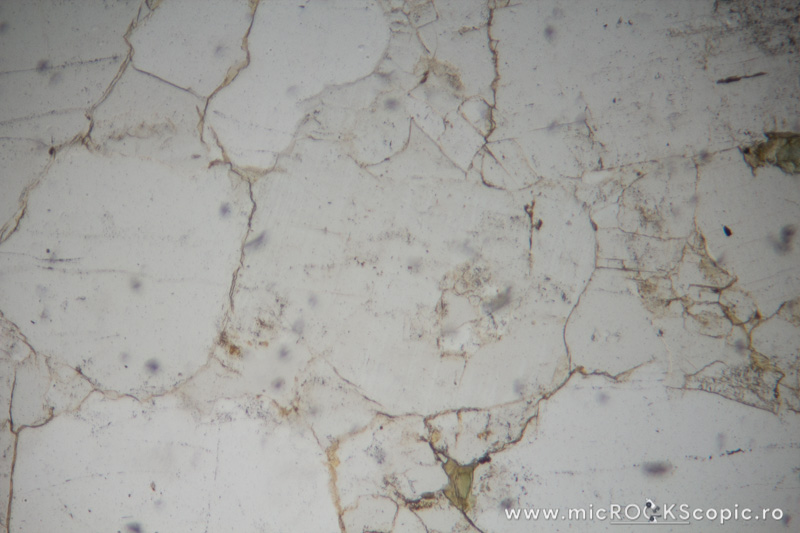
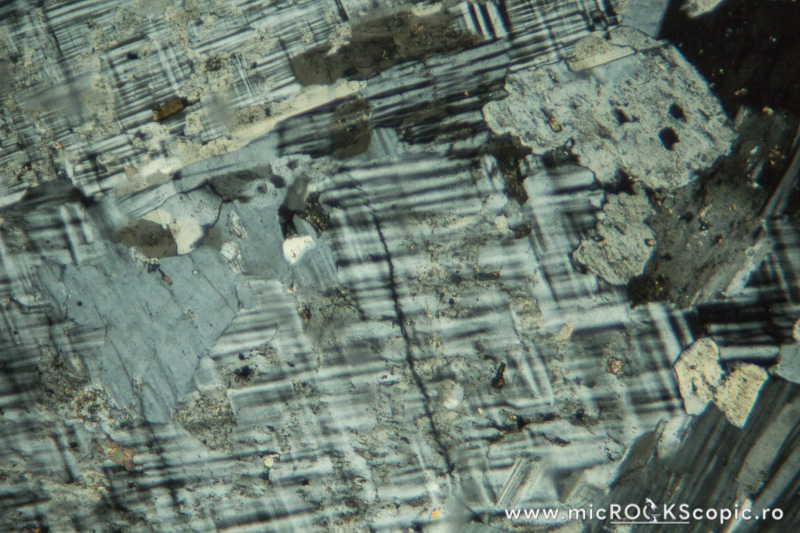
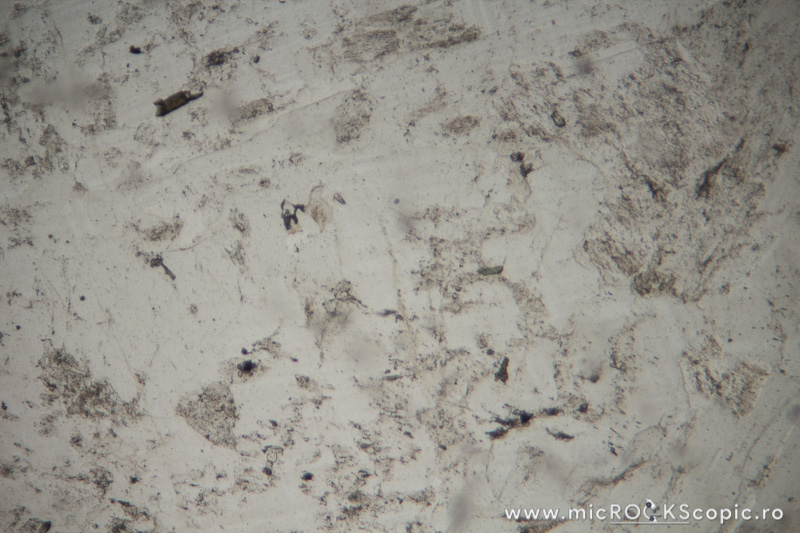
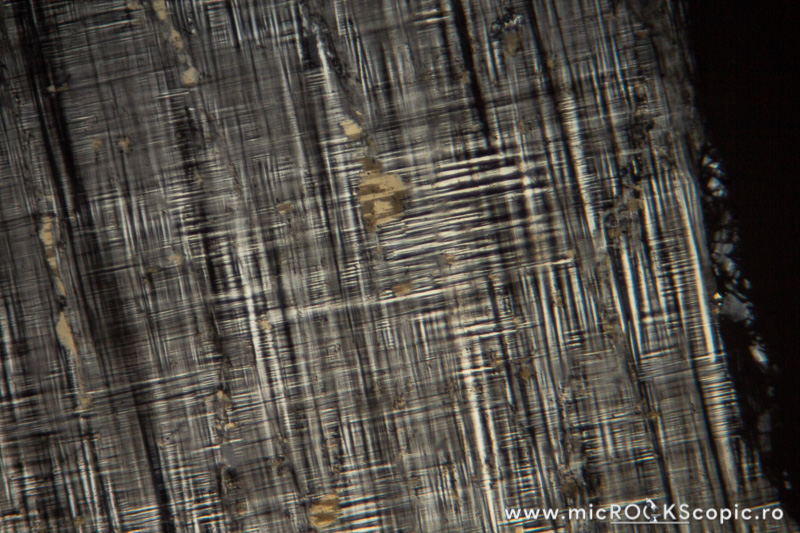



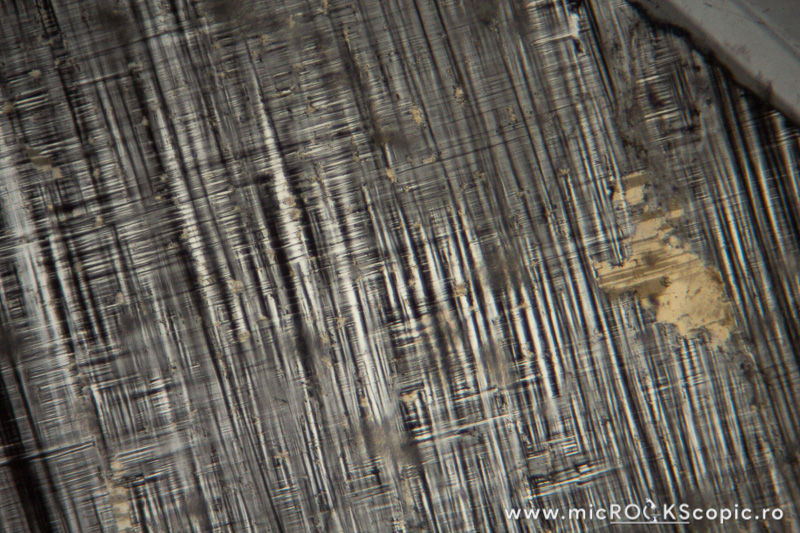

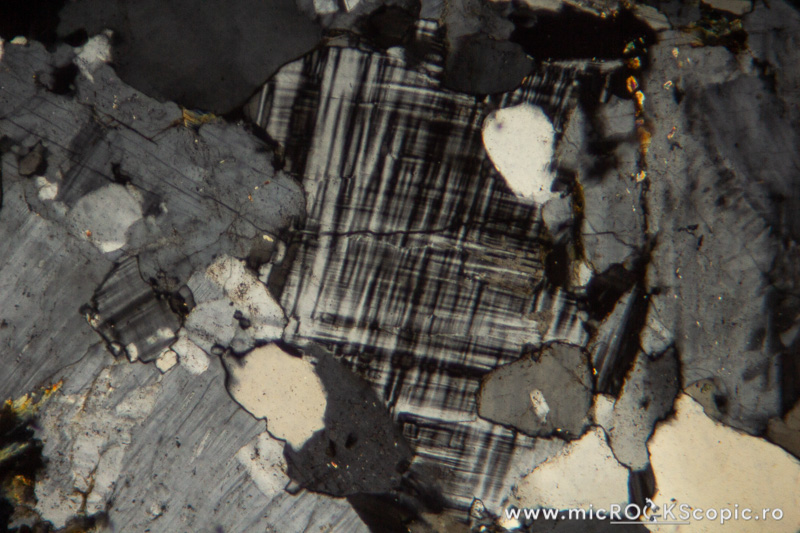

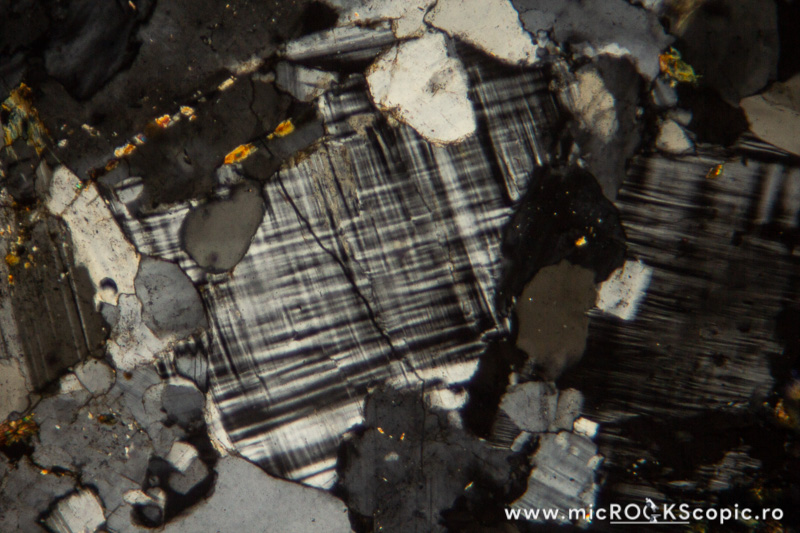

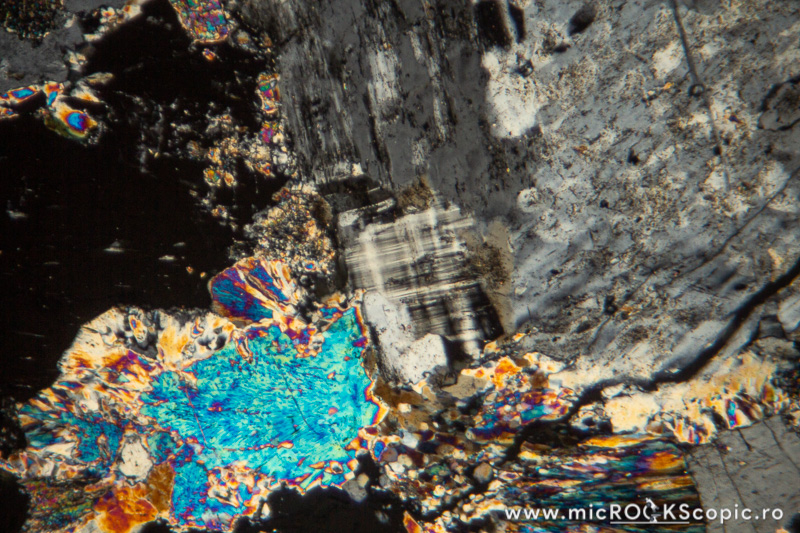
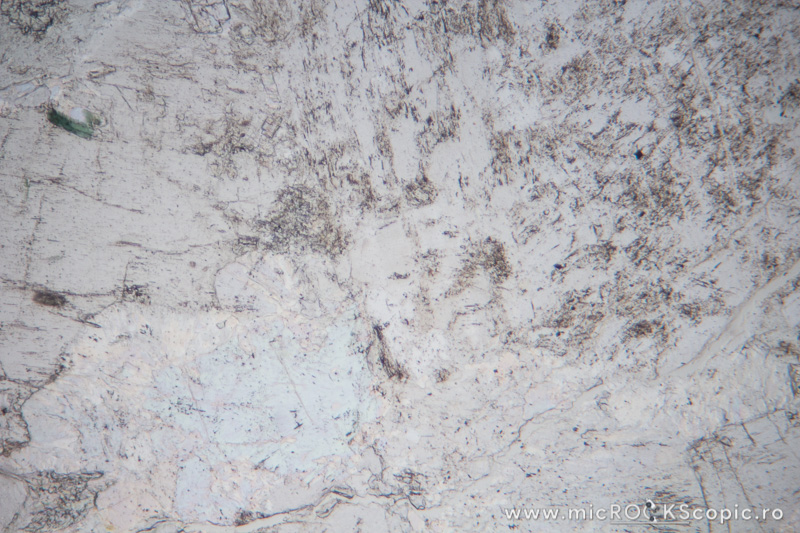
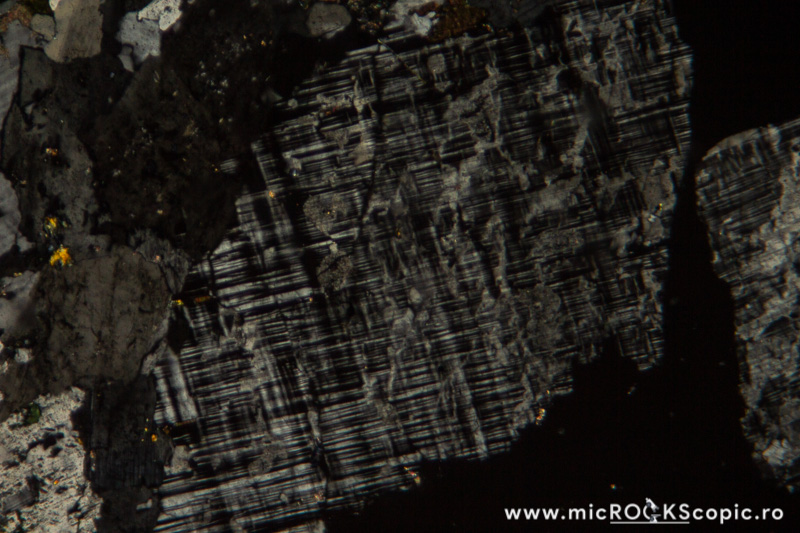



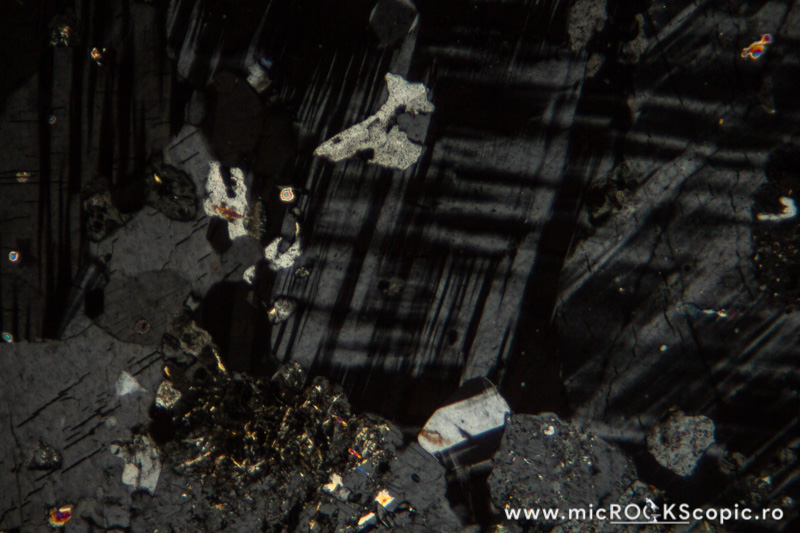

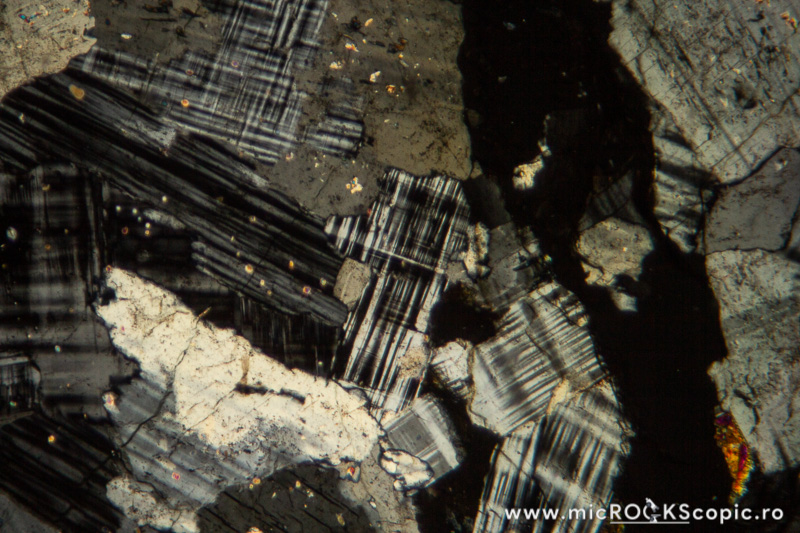
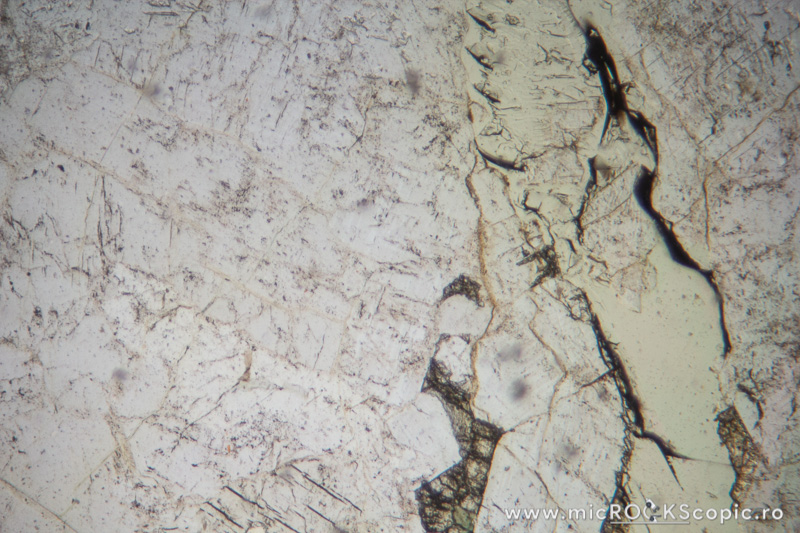
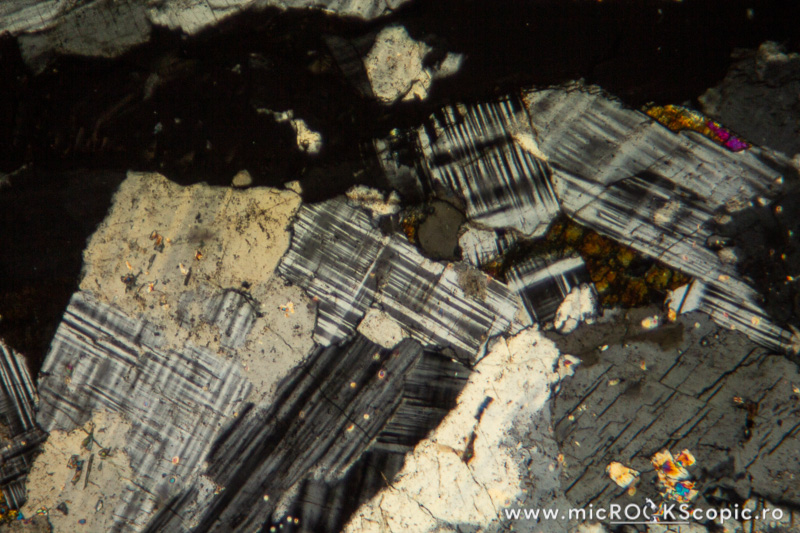
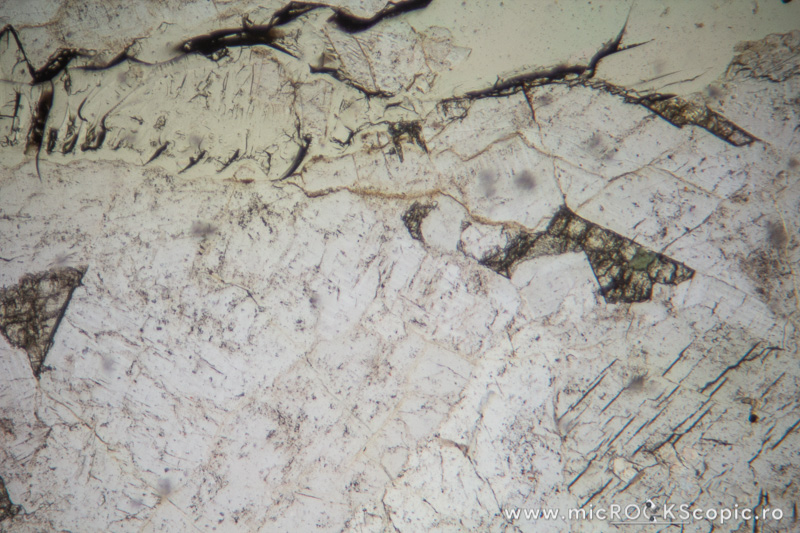
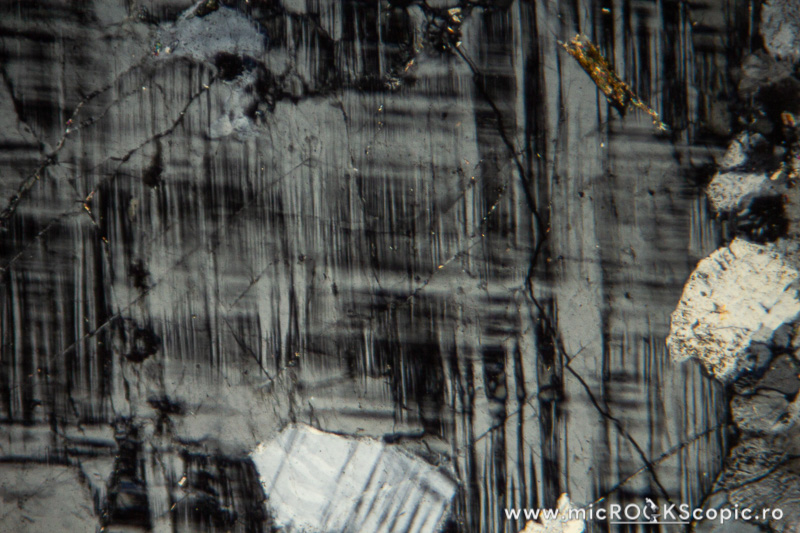

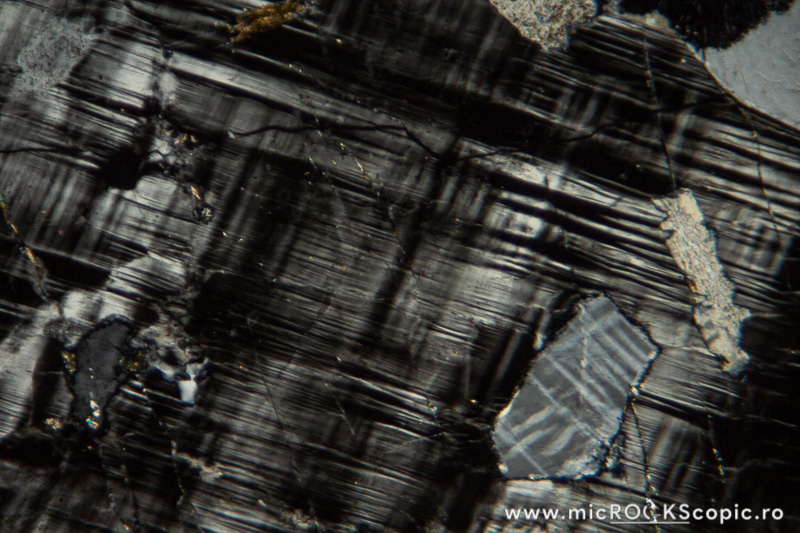

![[thumb]](http://microckscopic.ro/wp-content/uploads/fk_microcline_8_01-150x150.jpg)
![[thumb]](http://microckscopic.ro/wp-content/uploads/fk_microcline_6_32-150x150.jpg)
![[thumb]](http://microckscopic.ro/wp-content/uploads/fk_microcline_02-150x150.jpg)
![[thumb]](http://microckscopic.ro/wp-content/uploads/fk_microcline_09-150x150.jpg)
![[thumb]](http://microckscopic.ro/wp-content/uploads/fk_microcline_1_05-1-150x150.jpg)
![[thumb]](http://microckscopic.ro/wp-content/uploads/microcline_2_02-150x150.jpg)
![[thumb]](http://microckscopic.ro/wp-content/uploads/microcline_2_14-1-150x150.jpg)
![[thumb]](http://microckscopic.ro/wp-content/uploads/fk_microcline_3_02-1-150x150.jpg)
![[thumb]](http://microckscopic.ro/wp-content/uploads/fk_microcline_5_13-1-150x150.jpg)
![[thumb]](http://microckscopic.ro/wp-content/uploads/fk_microcline_7_02-150x150.jpg)
![[thumb]](http://microckscopic.ro/wp-content/uploads/fk_microcline_7_07-1-150x150.jpg)
![[thumb]](http://microckscopic.ro/wp-content/uploads/fk_microcline_9_01-150x150.jpg)
![[thumb]](http://microckscopic.ro/wp-content/uploads/fk_microcline_9_09-1-150x150.jpg)
![[thumb]](http://microckscopic.ro/wp-content/uploads/fk_microcline_10_01-150x150.jpg)
![[thumb]](http://microckscopic.ro/wp-content/uploads/fk_microcline_10_08-1-150x150.jpg)






